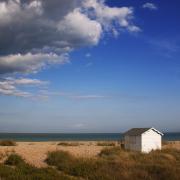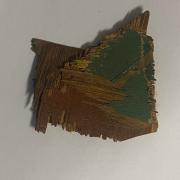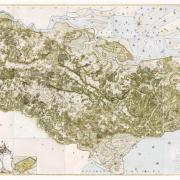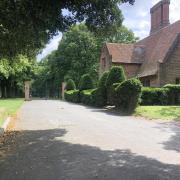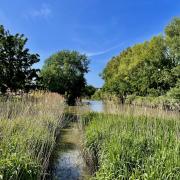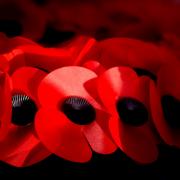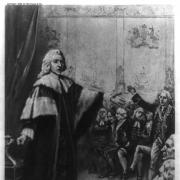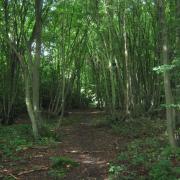Twelfth Night was once one of our biggest seasonal festivals. Find out about giant cakes, banishing evil spirits and the traditions that are being revived today to celebrate the New Year
Christmas is a hard act to follow; having spent the last month (or three!) gearing ourselves up for those few, precious days of fun and feasting with family and friends, we are now thrust into ‘the blackest month of all the year’ and those long, wintry evenings lose their charm once the twinkling fairy lights are packed away. It’s really no wonder we succumb so readily to the ‘January blues’, but it wasn’t always this way. Christmas Day became the focal point of the midwinter cycle during the 19th century, as changes to working life brought about a curtailment of public holidays. However, our ancestors observed the full twelve days of Christmas, culminating in the feast of the Epiphany on January 6 and, for centuries, the highlight of the festival was Twelfth Night. Historic literature is peppered with references to the Twelfth Night revels – an evening of fun and games, music and good food; Shakespeare’s Twelfth Night, written for the royal court celebrations in 1601, reflects this spirit of joviality.

The evening opened with the cutting of the very special Twelfth Night Cake. Secreted within this confection was a small token – usually a dried pea or bean – and the reveller who discovered it in their slice was crowned Twelfth Night King or Queen. The lowest servant or youngest child could suddenly find themselves cast as master of the house, and the evening – which might well dissolve into chaos – could see the usual order turned on its head as the party paid homage to the whim of its new ‘ruler’.
The cake itself, sometimes known as King Cake, Three Kings’ Cake or Baby Cake, first appears in mediaeval England as a light, spiced, yeasted dough, sweetened with some dried fruit. Ordinary folk might not have had access to a domestic oven or been able to afford the increasingly expensive, luxurious ingredients, but enterprising bakers offered a range of Twelfth Cakes at affordable prices. Canterbury pastry cook, Jeremiah Cooper, for example, advertised in January 1748, ‘any person may be furnished with Twelfth Cakes at any price’ and in January 1791, an astonished Kentish Gazette reporter wrote from the capital that ‘not less than one hundred thousand pounds were spent’ that year ‘in London and Westminster, on Twelfth cakes!’.
![Great British Life: Queen Victoria's spectacular Twelfth Night Cake 1848 [Public Domain] Great British Life: Queen Victoria's spectacular Twelfth Night Cake 1848 [Public Domain]](/resources/images/17558352.jpg?type=mds-article-575)
During the 1800s, the little Twelfth Cake matured into a more robust, densely fruited cake, enriched with eggs and plenty of rich, dark sugar. The ingredients of ‘Great Cakes’ or ‘Plum Cakes’, as they were now also known, were sumptuous and indulgent, but what really made a 19th-century Twelfth Cake was its decoration. In 1839, Maidstone confectioner, Mr Dawson, created a Twelfth Cake of enormous proportions: measuring 9 feet 9 inches across (nearly three metres by 22 cm), the oval-shaped glory weighed in at 125lbs. Meanwhile, in 1841, Messrs. Carter & Dunn of Chatham exhibited ‘a twelfth-cake with a medallion of Rochester Castle on it …it measured 2 feet 4 inches in diameter and was 9 inches thick.’ Queen Victoria’s Twelfth Cakes were legendary: her three-tiered 1848 cake was topped with a band of miniature Chinese musician figures, whose musical accompaniment was provided by a cleverly concealed music box. Dancers, statuary, and realistic flowers and foliage completed the decoration, while its bejewelled pedestal revolved slowly to show the cake off from every angle. Not surprisingly, confectionary of this calibre was not affordable for most. However, this did not prevent the less wealthy from creating their own, albeit less elaborate, versions, decorated with the new, commercially available figures, and emblems that were sold widely and cheaply.

Twelfth Night Cake recipe
The Twelfth Night revels might have been eclipsed, but the famous cake has endured, re-cast in the 20th-century as the treacly-brown, boozy, snow-frosted Christmas cake, now more often eaten at teatime on Christmas Day. As for the celebrated bean or pea, its descendants are, perhaps, found in the sixpences and thimbles secreted in the best homemade Christmas puddings.
Ingredients
225g soft butter
225g dark brown sugar
285g flour
225g raisins
225g sultanas
225g currants
Grated zest and juice of 1 orange and 1 lemon
2 tsp mixed spice or allspice
4 eggs
3 tbsp black treacle or molasses
60g candied peel (chopped)
60g dried or glacé cherries (chopped)
2 tbsp brandy
Extra brandy, plus 225g marzipan and copious amounts of royal icing to decorate!
Method
Grease and line a 20cm-round cake tin
Cream butter and sugar
Stir fruits and spices into flour
Combine eggs, treacle and brandy and stir into butter mix
Add flour and fruits and stir well.
Once completely cooled, brush with brandy and cover with a thin layer of marzipan
Leave to dry overnight, then cover with royal icing and decorate to your heart’s delight!

Twelfth Night is also a night for wassailing (also known as 'Howling' or 'Yowling'). The custom seems to have been widespread across the country and its ancient heritage is evident in the Saxon origins of the drinking toast, ‘wassail!’ (meaning ‘good health’). However, wassailing was not always a popular pastime. The 1576 Fordwich mayoral accounts allude to a ‘superstitious or old custom’ performed at New Year and Epiphany: with evident distaste, the puritanical scribe explains how ‘the boyes & servants at those tymes shall ffrom henceforth go into any mans orchardes or gardyns to beate the trees & sing vayne songes … belevyng therby that those trees the yere following wyll or shall yeld the more plenty of frute…’. An entry in the Canterbury Journal for January 3rd, 1846, harks back to a similar ritual, describing to its readers how ‘it was formerly the custom on this day for wandering minstrels to carry a ‘wassail-bowl’ of spiced wine to the houses of the gentry from whom they expected an hospitable reception’. In Kent, the term ‘yowling’ is often used interchangeably with wassailing; Edward Hasted, writing in the 1790s, believed it to derive from the name of Aeolus, god of the winds, to whom he suspected the ‘heathen’ custom of tree blessing was dedicated.
In many Kent towns and villages, this tradition is experiencing a significant revival. David Hicks has presided proudly over his Keston wassail since the early 2000s – held, for the last decade, at The Two Doves. First, he purifies his apple tree with salt, then toasts it with cider-soaked bread, before the gathered crowd concludes the ceremony with the great shout or ‘hollar’. In Tunbridge Wells on January 6, the Friends of Grosvenor and Hilbert Park will be meeting at 2pm by the Oast House for Apple Howling, with music from The Iron Spring morris dancers. The New Ash Green Woodlands Group has been holding its annual wassail since January 2007. There, a torchlit procession ends at the community orchard’s King Tree which, adorned with its fairy-light crown, takes centre stage for the blessing ritual. One can almost imagine the trees smiling as any evil spirits lurking amongst their shady branches are driven out by the jubilant singing, music and dancing of the wassailers as they raise their toast over the crackling bonfire. A recipe for a Wassail Bowl, to be served at the wassailing ‘until the midnight hour’, appeared in the Maidstone Journal, Kentish Advertiser and South Eastern Intelligencer on Christmas Eve 1844. Taken from an antique manuscript, the original suggests port, sherry or madeira, but red wine works just as well, as does Kent ale, Kent cider or a good Kent apple juice. Simmer the drink of your choice in a large pan with cardamoms, cloves, nutmeg, mace, ginger, cinnamon, and coriander, plus honey or brown sugar to taste and serve warm to your guests with the hearty greeting, ‘Wassail!’.
Apples, Cherries, Hops: Kent's Food and Drink by Naomi Dickins is published by Amberley Publishing, £15.99 amberley-books.com


![The torchlit Wassail procession makes its way to the New Ash Green Community orchard [Photo courtesy of New Ash Green Woodlands Group]](/resources/images/17558355.jpg?type=mds-article-575)





